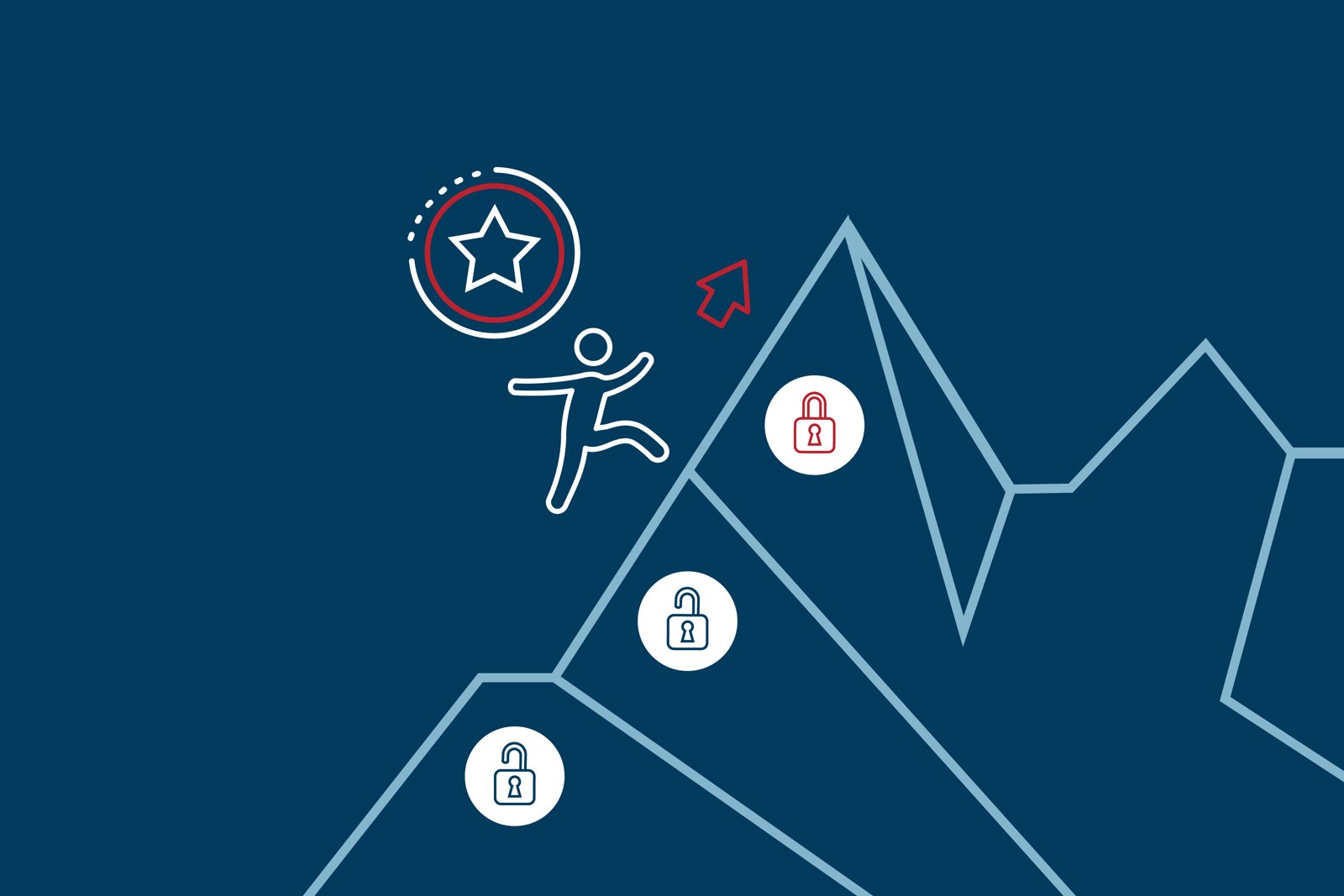The Innovation Imperative: Stay Ahead of the Curve to Boost Brand Devotion

Today’s brands are navigating extraordinary change at what feels like an accelerating pace. Consumer expectations are shifting, artificial intelligence (AI) and machine learning (ML) are transforming marketing, and the bar for customer engagement keeps rising.
Evolving brands’ core programs and campaigns through ongoing enhancements and minor adaptations is no longer enough. It’s time for meaningful change in customer loyalty and engagement—and innovation needs to lead the way.
Now is the time
More than a means to stay relevant, innovation is the lifeblood of modern brand devotion. While innovation is a persistent buzzword these days, seeking out new ideas, methods, and solutions has always been an element of customer loyalty. And loyalty—a way for brands to build emotional connections and increase customer value—is what we focus on all day, every day.
Today’s marketplace has reached an urgent innovation inflection point. Brands that establish themselves as innovators now have an opportunity to entrench brand devotion and remain in a position of leadership in their industry for years to come.
Four trends are fueling the overlapping urgency and opportunity of innovation today.
- Changing consumer values
COVID-19 shifted consumers’ values and priorities, and changed the way we select brands. Today’s consumers desire experiences over things, and they’re more focused on “we” over “me,” prioritizing collective, rather than individual, benefit. Increasingly avoiding brands that don’t align with their personal values, consumers give their attention, consideration, and devotion to brands that reflect their priorities and perspectives.
Significant differences in perspectives between generations also impact consumer decisions. While baby boomers prioritize personal service and overall value, Generation Zers seek out brands that embrace sustainability and corporate social responsibility.
Innovation—combined with a steadfast focus on building customer relationships and trust—drives brands to meet the needs of different audiences with relevant content while ensuring customers’ privacy concerns are considered, and data privacy laws and restrictions are addressed.
- Competition and market saturation
More brands are investing in loyalty and customer engagement. For some, that means investing in loyalty strategies for the first time, while others are redesigning existing programs. Unfortunately, many of these programs land in a sea of sameness by offering similar, and sometimes lackluster, customer experiences. Loyalty initiatives that are largely indistinguishable from the competition won’t help brands deliver a strong return on investment (ROI). Innovative programs that differentiate brands from their competitors, capture customer attention, and deliver on business objectives (e.g., customer identification and understanding, share growth, and increased retention) can produce an enviable ROI.
- Raised bar for engagement
Consumers’ expectations for new and groundbreaking offerings, content, and interfaces contribute to the current urgency for innovation. Today’s consumer wants their brand interactions to be unexpected, easy, and entertaining. Great advertising meets these expectations with emotional, captivating ads that leverage multiple channels to engage audiences. For example, Temu’s emotionally appealing Super Bowl ads, which featured embedded QR codes, drew in customers with content and gave them an immediate, direct way to connect with the brand.
Loyalty and engagement programs can benefit from the same strategy—forging emotional connections with customers in fun and unexpected ways at every touch point and offering multiple, convenient, and in-the-moment ways for consumers to engage.
- New technology and capabilities
AI and machine learning are two among the abundance of tools marketers are using to fuel unprecedented personalization at scale. Brands can reach their customers with a new level of efficiency and consistency across many channels—and they can find and target the best channel for each customer thanks to increasingly specific knowledge of consumer purchases and behavior. These new capabilities present unparalleled opportunities for innovation.
History shows that innovators win
According to Kantar, brands perceived as highly innovative grow seven times faster than competitors. History provides ample examples of companies that struggled because they failed to innovate quickly enough—and others that are thriving because they got ahead of their customers’ expectations.
Blockbuster, once a titan in the home video category, didn’t recognize the opportunity streaming offered to reinvent their business model and revitalize the customer experience. The brand’s eventual attempts to evolve fell short for customers who’d already established a familiarity with and loyalty to Netflix and other streaming services.
Retailers like JCPenney and Kmart adjusted too slowly to shoppers’ changing habits and preferences. Kodak missed the opportunity to lead in digital photography. Nokia gave up the chance to pioneer smartphone technology. These brands waited too long, or they clung to traditional products, channels, and business models, allowing more innovative brands to lead the vanguard.
Today’s brands risk the same fate if they don’t consider and address changes in their industries and how their customers’ preferences and expectations will shift in coming years in response to new technology, market factors, and trends.
On the other hand, brands that embrace new capabilities and respond quickly to trends in consumer preferences thrive. Innovation is imperative, whether it’s coming to market with a new sales model—like HelloFresh and Dollar Shave Club—or recognizing an opportunity to fill a gap in consumer demand (like Shein’s on-trend, affordable fashion).
The need for innovation that meets consumers’ changing needs and expectations extends to loyalty. Consumers expect both seamless transactions and memorably unique experiences that make them feel valued at every brand interaction. Chase, a leading credit card provider, gives its loyalty program members access to hard-to-get tickets for sporting events and concerts. Meanwhile, in the travel industry, the Marriott Bonvoy Moments program curates exclusive events and experiences that members can redeem points for. Programs that reach beyond the standard formula of points and rewards to share unique, meaningful, and memorable experiences with their members stand out from the competition.
The formula for innovation
Innovation is unique to each brand and market, but brands that lead successfully in this area share some of the same strategies. Brands can leverage these best practices to create loyalty and customer engagement programs that stand out:
- Understand and empathize with customers. Innovative brands cultivate a meaningful understanding of their customers’ needs, habits, and expectations—and how they’re evolving. They talk to their customers, and not just about the brand. They delve into the holistic factors that drive customer decisions—those at the surface level and more deeply rooted influences.
- Define problems. Innovators know that to solve a problem or address a customer pain point, they must first define it. They use their deep understanding of their customers to identify and clearly articulate specific opportunities for changes and improvement.
- Get creative. In the earliest stages, innovators allow their thinking to be unencumbered by potential roadblocks or drawbacks. They pursue fresh thinking and lofty ideas to solve the problems they’ve They free themselves from the notions of what they know—or think they know—won’t work.
- Develop prototypes. With problems identified, and ideas for creative solutions explored, innovative brands develop prototype representations of the solution.
- Test with target audiences. Innovative brands test their solutions with specific audiences to ensure they’re effective before rolling them out at scale.
Mastering measurement
Capturing metrics for a concept like innovation can be tricky, but it’s essential to success. Each brand’s metrics will differ based on their particular circumstances and goals, but here are some to consider:
Develop a habit of innovation across the organization. This can be measured by the number of employees participating in training and activities like human-centered design (HCD) workshops that leverage three elements central to building brand devotion: empathy, creativity, and business needs.
Expand innovative idea generation. Metrics for this could include the number of process improvements and innovative ideas generated by individual teams or during specific time periods.
Increase customer satisfaction ratings. Measure customers’ satisfaction with your brand using surveys. Evaluate how satisfaction rates change as a result of innovation work.
A culture of innovation
The Lacek Group has been an innovator for more than 30 years, and our commitment to innovation has never been stronger than it is today. The convergence of urgency and opportunity for innovation inspires us to create inventive and forward-thinking programs, content, and systems for our clients and our employees. Want to know our formula?
Prioritize original thinking. We consider outside-in and inside-out points of view—and we recognize that great ideas can come from anyone, anytime.
Implement core processes. Human-centered design—which focuses on meeting customers’ needs to create useful, sought-after products and services—inspires and guides our creative process.
Gather feedback. Understanding customer needs is the key to uncovering opportunities for innovation. We conduct customer empathy interviews to develop deeper insight into customer needs and desires.
Think big-picture. We continually overlay insights, trends, and overarching values and concepts to help identify and capitalize on new opportunities.
Embrace new communication channels. New social media outlets and the rise of influencers—and microinfluencers—mean brands have less control of their messaging. It’s imperative to understand how to effectively reach consumers in the channels where they are engaged, so we stay alert to trends on social channels as part of our omnichannel approach.
Avoid analysis paralysis. One of the principles of HCD is to fail fast and cheaply. Our two cents: don’t be afraid to test a new idea on a small scale to see if it works.
Aim to understand humanity on a deeper level. More than analyzing consumer input and feedback, we’re exploring the emotions and motivations that drive consumer behavior. These deeper insights inform creative and meaningful solutions that impact brands and their devoted consumers.
While the concept of innovation is having a zeitgeist moment, innovation itself isn’t new and it doesn’t reflect a single point in time. It’s an ongoing pursuit, a perpetual process of analysis, creativity, and change. Arguably, innovation is at the heart of loyalty, where the goal is to stay in tune with customers’ ever-evolving needs, wants, and perspectives. Brands that embrace innovation open themselves to the opportunity to build long-lasting customer devotion and establish themselves as industry leaders for years to come.
Michelle Wildenauer is senior vice president, Strategic Services and Julie Bustos is senior vice president, Marketing Innovation for The Lacek Group. For more than 30 years, The Lacek Group has been perfecting the art and algorithms of brand devotion. We help world-class brands identify their highest-potential customers, engage them across channels throughout their lifecycles, personalize each relationship for optimal long-term results, and measure the true effectiveness of those efforts. The Lacek Group is an Ogilvy One company.

